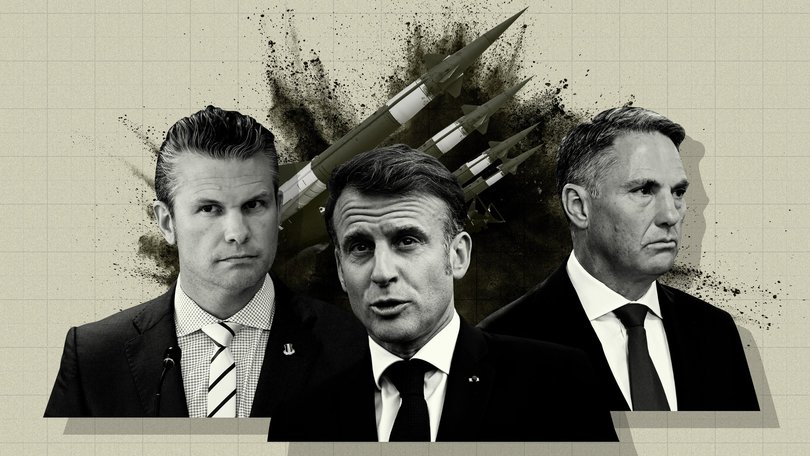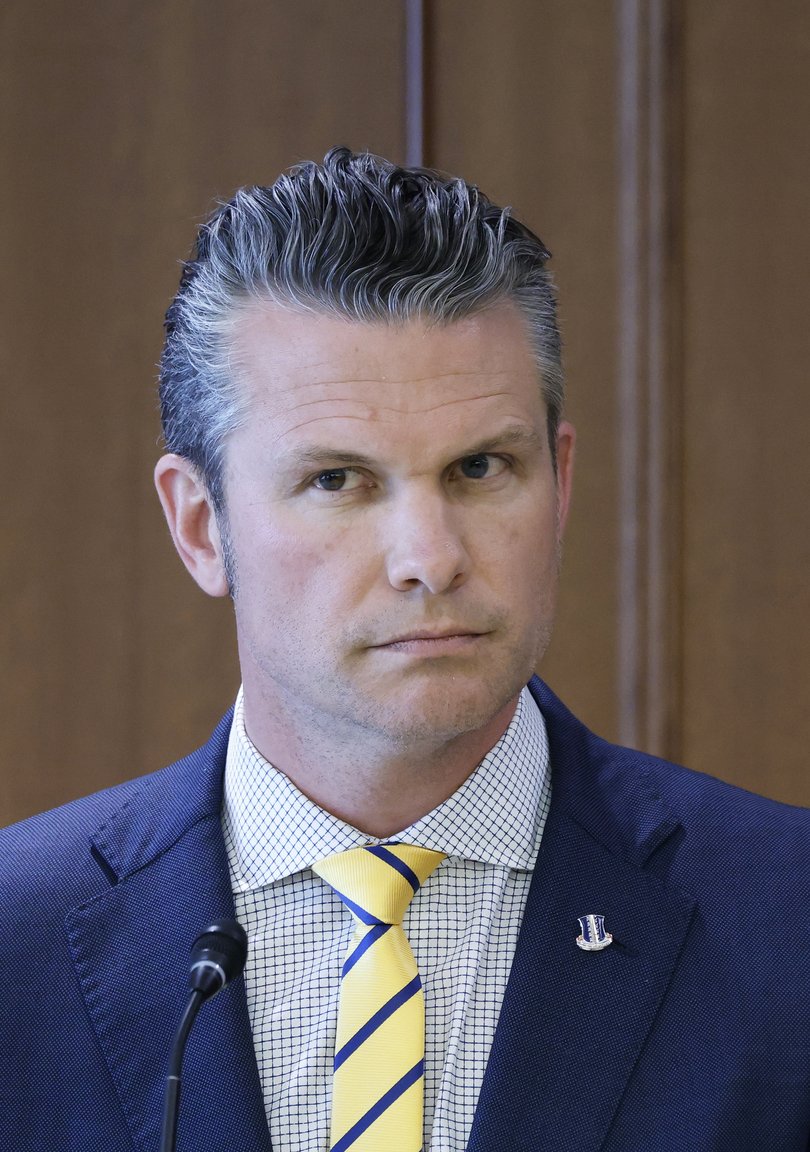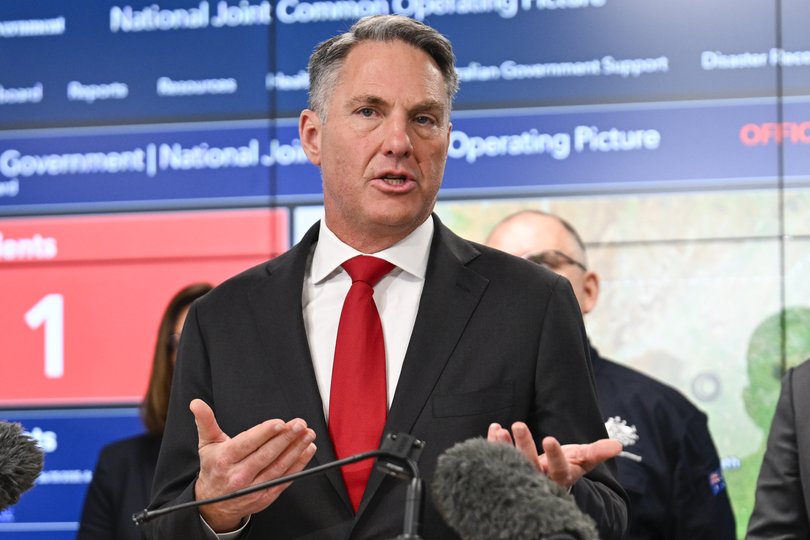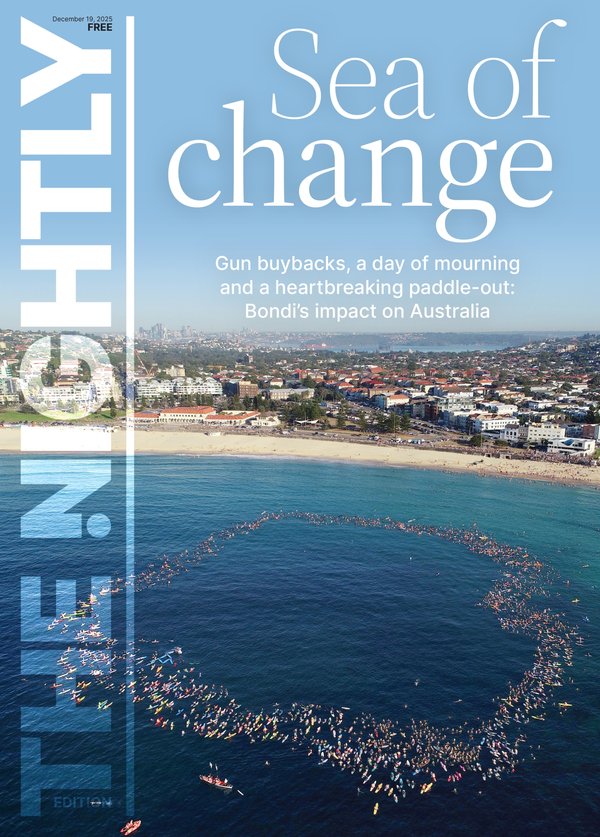Shangri-La Dialogue: Richard Marles expected to meet US counterpart Pete Hegseth at top Asian security summit

Defence Minister Richard Marles is expected to meet US Secretary of Defence Pete Hegseth this weekend at Asia’s top security summit in Singapore amid regional uncertainty about Washington’s economic and military commitment to the Indo-Pacific.
The annual Shangri-La Dialogue, which draws together Asian and Five Eyes defence ministers, alongside hundreds of senior defence and intelligence officials, has evolved into a gauge of strategic competition between Washington and Beijing in the region.
The forum will kick off on Friday night with a keynote speech from French President Emmanuel Macron – a high-profile honour afforded Prime Minister Anthony Albanese in 2023, when he cautioned that peace is “never a given” and must be “built, pursued, defended and upheld.”
Sign up to The Nightly's newsletters.
Get the first look at the digital newspaper, curated daily stories and breaking headlines delivered to your inbox.
By continuing you agree to our Terms and Privacy Policy.But this year all eyes will be on a Saturday morning speech by Mr Hegseth which will set the tone for US engagement with the Indo-Pacific after the economic shock of new tariffs and as questions remain over the Trump administration’s approach to potential military flashpoints including Taiwan and the South China Sea.
Last year, then US defence chief General Lloyd Austin and his Chinese counterpart Admiral Dong Jun shared their first handshake – a symbolic gesture that raised premature hopes of a de-escalation of tensions.
This year, Admiral Dong is unlikely to lead the Chinese delegation, reported the Financial Times, in an unusual absence, and one which will allow the United States to fill the gap with its own narrative.

Mr Hegseth faced a timely opportunity to reassure the region about economic security and its role as a reliable ally, Jennifer Parker, a former naval officer and expert associate at the ANU’s national security college, told The Nightly.
“Asia would have been watching closely what the US has been doing and saying respecting Ukraine and NATO and certainly some of the countries that are either allies of the US, or not allies, but closely aligned, will be questioning whether this means they are or are not a reliable ally,” she said.
Key words highlighting the Indo-Pacific and specifically Asia as important to US security, as well as calling out China’s provocative behaviour in the Philippines’ exclusive economic zone and aggression towards Taiwan were also vital, she said.
“They’re the key things that people will be looking for in the speech. I do worry, though, that you’re not going to get it.”
Mr Marles, who will be making his fourth trip to the conference organised by the International Institute for Strategic Studies (IISS), is also expected to follow tradition by making his own contribution.
Last year, Chinese military officers pushed back against the Defence Minister after he gave a robust speech criticising China’s military build-up, regional aggression and confrontations with Australian naval forces.
This year, Mr Marles could use the occasion to additionally reinforce Australia as an independent foreign policy actor of the US, said Ms Parker.
“Yes, we have an alliance with the US, the US is very important to Australian security, but we also have separate, independent bilateral relationships, and so really stressing that,” she said.
Mr Marles was the first foreign counterpart to meet with Mr Hegseth in Washington in early February, when he made a $800 million down payment on future submarine production under the AUKUS defence arrangement between the US, UK and Australia.
Mr Hegseth responded with an assurance that President Donald Trump was “very aware [and] supportive of AUKUS”, a $368 billion program to deliver a nuclear-powered submarine capability for Australia and boost trilateral defence cooperation.
It is understood that the schedule for Mr Marles’ bilateral meetings with Mr Hegseth and other defence counterparts has not yet been finalised, but AUKUS would be expected to be high on the agenda of weekend talks.

The conference location at the luxury Shangri La hotel in downtown Singapore also offers top defence officials a warren of backrooms to discreetly meet and mingle to discuss the region’s evolving security environment.
The hotel’s informal setting also allows journalists to mix freely with officials in the lobby, creating moments of levity like a viral TikTok last year comparing the attractiveness of military uniforms.
However, the summit’s agenda is largely high-brow, consisting of major plenary sessions, speeches and questions from the audience.
An Asia-Pacific Regional Security Assessment released on Wednesday by summit host IISS highlighted key points of debate as adoption of new technologies such as Uninhabited Aerial Vehicles (UAVs), maritime security concerns over the free flow of goods and services, and the development of military cyber units.
The report also addresses major international security questions posed by the new Trump administration, including the White House’ approach to achieving peace in Ukraine and the Middle East and its engagement with the Quad – a diplomatic partnership between Australia, India, Japan, and the US.
The document’s 21 contributing experts conclude that President Trump could work with Indian Prime Minister Narendra Modi, who will host the next Quad meeting later this year, to revitalise its purpose to put increased emphasis on the security and defence elements of the arrangement.
This would mean “the grouping could facilitate India’s acquisition of advanced military-related technology and maritime-security support from the US and help it counter Chinese presence, influence and impact in the Indian Ocean,” it states.
The study highlights the choice of the Quad for Marco Rubio’s first group meeting as Secretary of State, which provided “reassurance” the Asia-Pacific would remain a priority for the new administration.
“The Quad could play a more central role in the broader Asia-Pacific regional security architecture moving forward,” it concludes.

